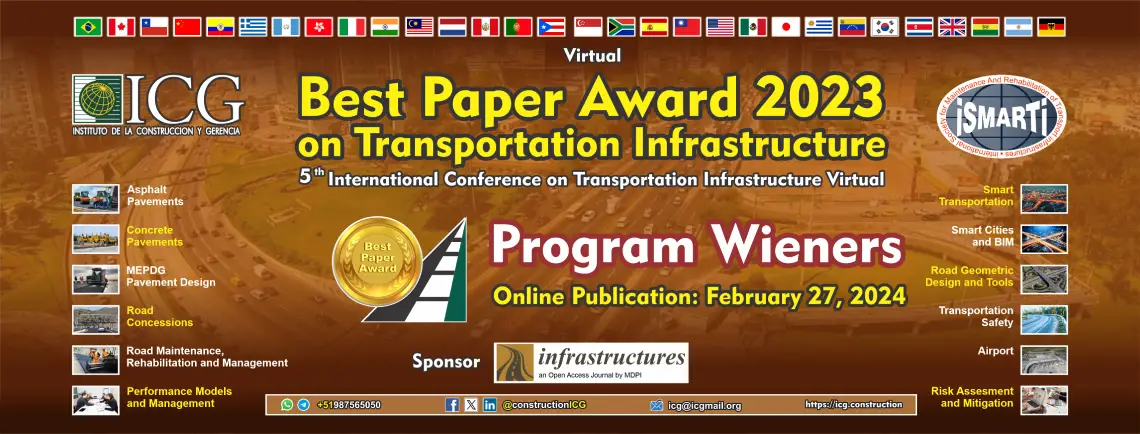
 |
 |
 |
 |
 |
 |
|---|
 |
Comparing the performance of historical and regular stone pavement structures through Finite Element Method Authors: Nicholas Fiorentini, Jiandong Huang, Giacomo Cuciniello, Pietro Leandri and Massimo Losa |
||||||
|---|---|---|---|---|---|---|---|
 |
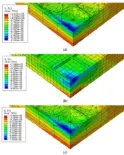 |
Abstract | View Paper | ||||
| Stone pavement structures (SPS), also known as stone roads or stone-paved roads, are road pavements constructed using stones as the primary surface material. Different types of SPS exist; historically, irregular-shaped stones with downward protrusions have been often exploited since regular-shaped stones were difficult to be produced. More recently, regular cuboid stones can be also used. | |||||||
 |
Nicholas Fiorentini | ||||||
| Nicholas Fiorentini, The research of Nicholas involves the prediction and mapping of infrastructure deficiencies using Machine Learning, Geographic Information Systems, and Non-Destructive High-Performance Techniques, such as InSAR, FWD, and GPR. Also, Nicholas is interested in road safety analyses & modeling, crash frequency & crash severity prediction, and pavement management. |
|||||||
 |
Jiandong Huang | ||||||
| Professor Jiandong Huang earned his Bachelor of Science degree from Fudan University, Shanghai and went to the United States through the CUSBEA* programme to pursue his doctoral study in transcriptional regulation during fruit fly embryonic pattern formation. He earned his PhD degree from the University of California, Los Angeles. Thereafter, Professor Huang received his postdoctoral training in mouse genetics at National Cancer Institute, National Institutes of Health in the US. During this period, Professor Huang was the first to report that the two major intracellular transportation systems of mammalian cells, the | |||||||
 |
Giacomo Cuciniello | ||||||
| Giacomo Cuciniello currently works at the Nottingham Transportation Engineering Centre, University of Nottingham. Giacomo does research in Railway Engineering, Transportation Engineering and Civil Engineering. |
|||||||
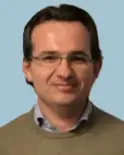 |
Pietro Leandri | ||||||
| Associate Professor for the scientific disciplinary field ICAR/04 (Roads, Railways and Airports) at the Department of Civil and Industrial Engineering, University of Pisa. Research activities carried out mainly in the areas of the topics concerning the study of innovative materials for use in sustainable pavements, modeling of the mechanical response of road superstructure, characterization of mixtures for flexible pavements, study of surface characteristics of road surfaces and effects on vehicle | |||||||
 |
Massimo Losa | ||||||
| Associate Professor at the Department of Civil and Industrial Engineering of the University of Pisa. Scientific disciplinary sector: Roads, Railways and Airports ICAR/04 On 12.28.1994 he took up service as a university researcher of the disciplinary group H03X (Roads, railways and airports) at the Faculty of Engineering of the University of Pisa. |
|||||||
 |
Wander effect of connected and autonomous vehicles on pavement performance Authors: Jorge Pais, Paulo Pereira and Liseane Thives |
||||||
|---|---|---|---|---|---|---|---|
 |
 |
Abstract | View Paper | ||||
| Connected and Autonomous Vehicles (CAV) will change how road engineers design road pavements because they can position themselves within a traffic lane, keeping their position in the lane more precisely than human-driven vehicles. These vehicles will have lower lateral wandering, which can induce more damage to pavements, such as cracking and permanent deformation, than the conventional vehicles, with consequences for the infrastructures due to the increased cracking and reduced safety due to the rutting. | |||||||
 |
Jorge Pais, Ph.D. | ||||||
| Jorge Pais is an Associate Professor of the Department of Civil Engineering at the University of Minho (UM) in Portugal. He received his Ph.D. degree from University of Minho in 1999 with a thesis on reflective cracking in flexible pavements. Before his current position, Dr. Pais worked as research assistant with the pavement research group at the UM. He holds Bachelor (1990) and Master (1993) degrees in Civil Engineering from University of Porto in Portugal. Since 2012 he has been head of the Department of Civil Engineering. | |||||||
 |
Paulo Pereira, Ph.D. | University of Minho, Portugal | |||||
| Professor Paulo Pereira Present Position: Professor and Researcher of Transportation at the Department of Civil Engineering and research centre; Centre for Territory, Environment and Construction, University of Minho. Member of General Council of the University of Minho. Coordinator of the Interdisciplinary Platform UM-Cities of the University of Minho. Director of the research centre Centre for Territory, Environment and Construction (CTAC). Education and Degrees: Aggregation, University of Minho, 1999; PhD in Civil Engineering, 1988, University of Minho; BSc in Civil Engineering, 1980, University of Porto. | |||||||
 |
Liseane Thives, Dr. | University of Minho, Portugal | |||||
| Dr. Liseane Thives has experience in Civil Engineering, focusing on roads, design, construction and transportation. She holds a Doctor degree in Civil Engineering from the University of Minho (Portugal). Her research topics are: transport, road pavements, stormwater harvesting, and waste management. She worked for 18 years on pavement sites. Since 2010 she is an Associate Professor at the Federal University of Santa Catarina, Department of Civil Engineering. She supervises students at the master’s and doctoral level, has more than 40 articles published in indexed journals and more than 100 articles published in conferences. |
|||||||
 |
Lessons learned from the Construction and Initial Performance of a Double Chip Seal wit Paving Mat Pilot Project Authors: DingXin Cheng and Lerose Lane |
||||||
|---|---|---|---|---|---|---|---|
 |
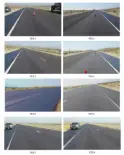 |
Abstract | View Paper | ||||
| Single chip seals are used by many agencies to maintain or preserve their roadways. While the construction and performance of single chip seals can be easily found from literature, the construction of double chip seals with and without paving fabric or paving mats is still not common. This paper investigates four double chip seal strategies used in a pilot project constructed on US 395 in Inyo County, California, by Caltrans. Within the double chip seal project limits, eight Performance Evaluation Sections (PESs) using four treatment strategies were established for detailed performance monitoring and evaluation: | |||||||
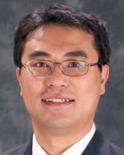 |
DingXin Cheng, Ph.D., P.E. | California State University, Chico | |||||
| Director of California Pavement Preservation Center and Professor of California State University Chico. Professor Cheng is a graduate of Texas A&M University, College Station, Ph.D., Transportation and Pavement Material, 2002. University of Toledo, M.S., Geotechnical Engineering, 1999. Northeastern University, China, M.S., Rock Mechanics, 1994. Northeastern University, China, B.S., Civil Engineering, 1991. Professor Cheng teaches Transportation Engineering, Traffic Engineering, Pavement Design and Pavement Material, Soil Mechnics and Foundations. And developed Software: Two-Way Street Signal Progression Software. | |||||||
 |
Lerose Lane | ||||||
| Education B. S. Civil Engineer, CSU, Chico (1970), UC Davis Ext. (1972-73). Senior Pavement Preservation Engineer, CSU, Chico (2010 to Present), District Materials Engineer, Caltrans, District 2 (1998-2007), Branch Chief, Design R-2, Caltrans, District 2 (1994-1998), Senior Construction Engineer, Caltrans, District 2 (1991-1994), Resident Engineer, Caltrans, District 2 (1989-1991), Engineer, Range C, Design, Caltrans, District 2 (1988-1989), Associate Engineer, Design, Right of Way, Land Development, County of Tehama, Dept. of Public Works (1981-1988), |
|||||||
